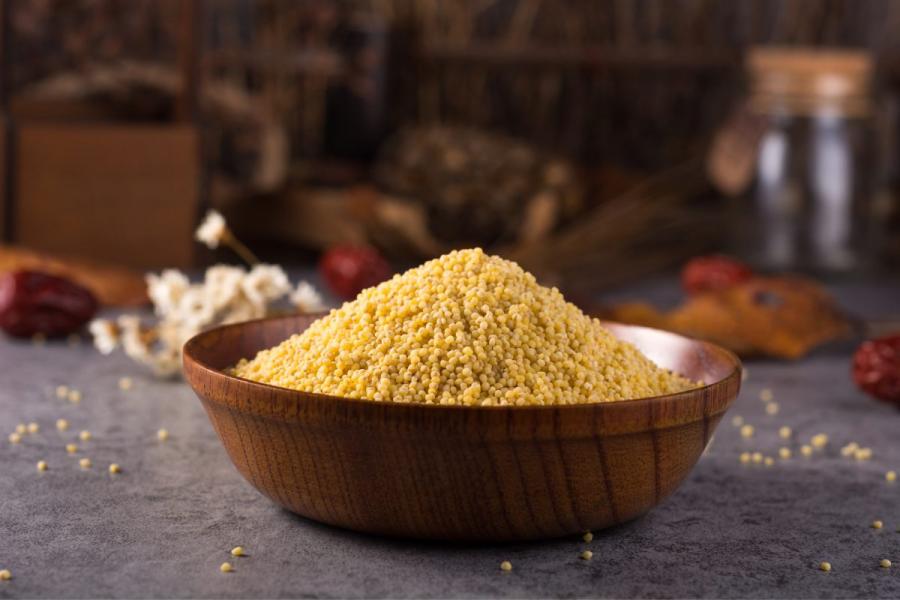Millet
Millet's adaptability to various soil and climate conditions, along with its nutritional benefits, makes it a valuable crop.
Millet is a group of small-seeded grasses, which are widely grown around the world as cereal crops or grains for fodder and human food. It is a versatile ingredient that can be used in a variety of dishes, from bread to beverages.
Millet has been cultivated for thousands of years and was a staple grain in many ancient civilizations. Its cultivation is believed to have originated in Africa or the Indian subcontinent around 7000 BC. It spread throughout Asia and Europe as a staple food for its ability to grow in harsh, arid, and semi-arid regions.
Essential facts
Millet grains are small, round, and typically pale yellow or white, although some varieties can be red, gray, or brown. It has a mild, slightly nutty flavor, and a texture that can be crunchy or soft depending on how it is cooked.
There are several varieties of millet.
Pearl millet (pennisetum glaucum) is the most widely grown type, especially in Africa and India.
Foxtail millet (setaria italica) is known for its long, brush-like panicles.
Proso millet (panicum miliaceum) is also known as white millet or hog millet.
Finger millet (eleusine coracana) is notable for its high calcium content.
Barnyard millet (echinochloa spp.) includes Japanese and Indian varieties.
Kodo millet (paspalum scrobiculatum) is often used in Indian cuisine.
Little millet (panicum sumatrense) is small and typically cooked like rice.
Cultivation
Millet plants are typically annuals and are drought-resistant, making them suitable for cultivation in dry climates. They have a short growing season and can produce grains within 65 days of planting. The plants range in height from 30 cm to 4 meters, depending on the variety.
Buy and store
Millet is typically hulled and may be polished, a process that removes the outer husk to produce a lighter, more digestible grain. It can also be rolled or flaked in a manner similar to oats.
Millet can be found in different forms, including whole grain, flour, flakes, and ready-to-eat cereals. When buying millet, look for whole millet grains that are uniform in color without any signs of moisture. It should be stored in an airtight container in a cool, dry place. If stored properly, millet can last up to two years.
Culinary uses
Millet can be prepared in a variety of ways. It can be cooked and eaten like rice, ground into flour and used for baking, or popped like popcorn. It is commonly used in porridges, bread, and to make fermented drinks. In Indian cuisine, it is often used to prepare rotis and other types of flatbreads.
Nutritional value
Millet is rich in nutrients and provides a variety of health benefits. It is a good source of protein, dietary fiber, several B vitamins, and numerous dietary minerals, especially manganese. Millet is gluten-free and has a low glycemic index, making it a great grain alternative for people with gluten intolerance or diabetes.

